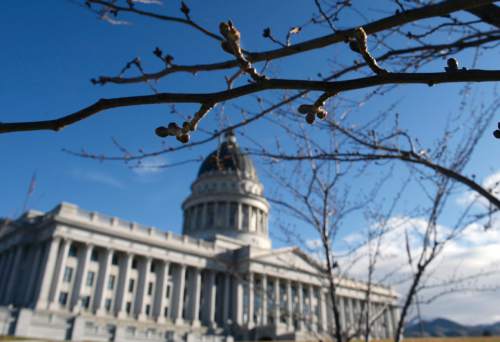This is an archived article that was published on sltrib.com in 2015, and information in the article may be outdated. It is provided only for personal research purposes and may not be reprinted.
Utah's new official population for 2015 is nearly 3 million — but it fell just 4,081 people short of that milestone.
To be exact, the population is 2,995,919, according to estimates released Tuesday by the U.S. Census Bureau.
But that estimate is for the state's population as of July 1 — six months ago. So, "We're definitely beyond 3 million now," said Phil Dean, state budget director and chief economist.
In fact, Gov. Gary Herbert held a news conference Oct. 26 saying that Utah probably passed the 3 million point about then. "Based on the Census numbers, it may have been a teeny bit earlier," Dean said.
That means the number of Beehive State residents now is slightly larger than the population of Chicago.
It is roughly the same as the nation of Mongolia, and just ahead of Armenia, Lithuania and Albania.
The Census estimates that Utah added 51,421 residents between July 1, 2014 and July 1, 2015 — the equivalent of adding a city the size of Murray during that year. It means Utah's population increased by about 141 people every day.
Utah's growth rate of 1.75 percent during the year slipped a bit to the sixth fastest among the 50 states, the Census reported. Utah now ranks No. 31 in total population, up from No. 33 last year. It just passed Arkansas and Mississippi.
Pam Perlich, director of demographic research for the University of Utah's Kem C. Gardner Policy Institute, said most of the recent growth came from "natural increase," or births minus deaths.
But she said that natural increase is slowing. "We still have the nation's highest fertility rate, but it's way down from where it was" before the recession — as parents may have delayed having children for economic reasons, she said. Also, she said the state's death rate has been creeping upward.
"I think we're glimpsing the beginnings of a new era of a slower rate of growth. We're not returning to that really rip-roaring rapid growth that we saw in the 1990s," Perlich said. "I'm not sure that's a bad thing. It gives us time to manage the growth."
But the Census said Utah had a net in-migration of about 16,000 people last year, double the amount from the previous year. Perlich said a group of local demographers figure it was even higher, perhaps 22,000. In some post-recession years recently, the state had virtually no net in-migration.
"That suggests that the state's strong economy is attracting people here for jobs," Dean said. "It's a sign that people are attracted to the state and they want to see themselves here."
Perlich said it took 119 years from when the Mormon settlers arrived for the state to reach its first 1 million residents in 1966.
It took another 29 years to hit 2 million in 1995. Then it took 20 years to achieve 3 million. State officials have said the 4 million mark is expected in 2031, in 16 years. But Perlich said the new data suggest that growth now may be a bit slower than expected.
Still, Utah's population now increases by about one person every 13 minutes. A baby is born every 10 minutes, someone dies every 35 minutes, and someone moves into the state every 90 minutes.
New growth has also made Utah more diverse. In comparison with the 1950s, when Utah was nearly all white, minorities now make up 21.7 percent of the state's population, according to 2014 data from the U.S. Census Bureau.
New estimates show that North Dakota was the nation's fastest-growing state last year, for the fourth year in a row. Its population increased 2.3 percent, followed by 1.89 percent growth in Colorado; 1.85 percent in Nevada; 1.84 percent in Florida; and 1.82 percent in Texas.
The United States as a whole saw its population increase by 0.79 percent over the period to 321.4 million, slightly faster than the rate of growth over the previous year (0.78 percent).
North Carolina's population crossed the 10 million mark for the first time, the ninth state to do that.
Also, Florida added more people than California for the first time in nearly a decade. Florida's gain of 365,703 people also pushed it past 20 million, becoming the third state to reach that milestone.
California continued to be the most populous state on July 1, 2015, with 39.1 million, followed by Texas with 27.5 million.





